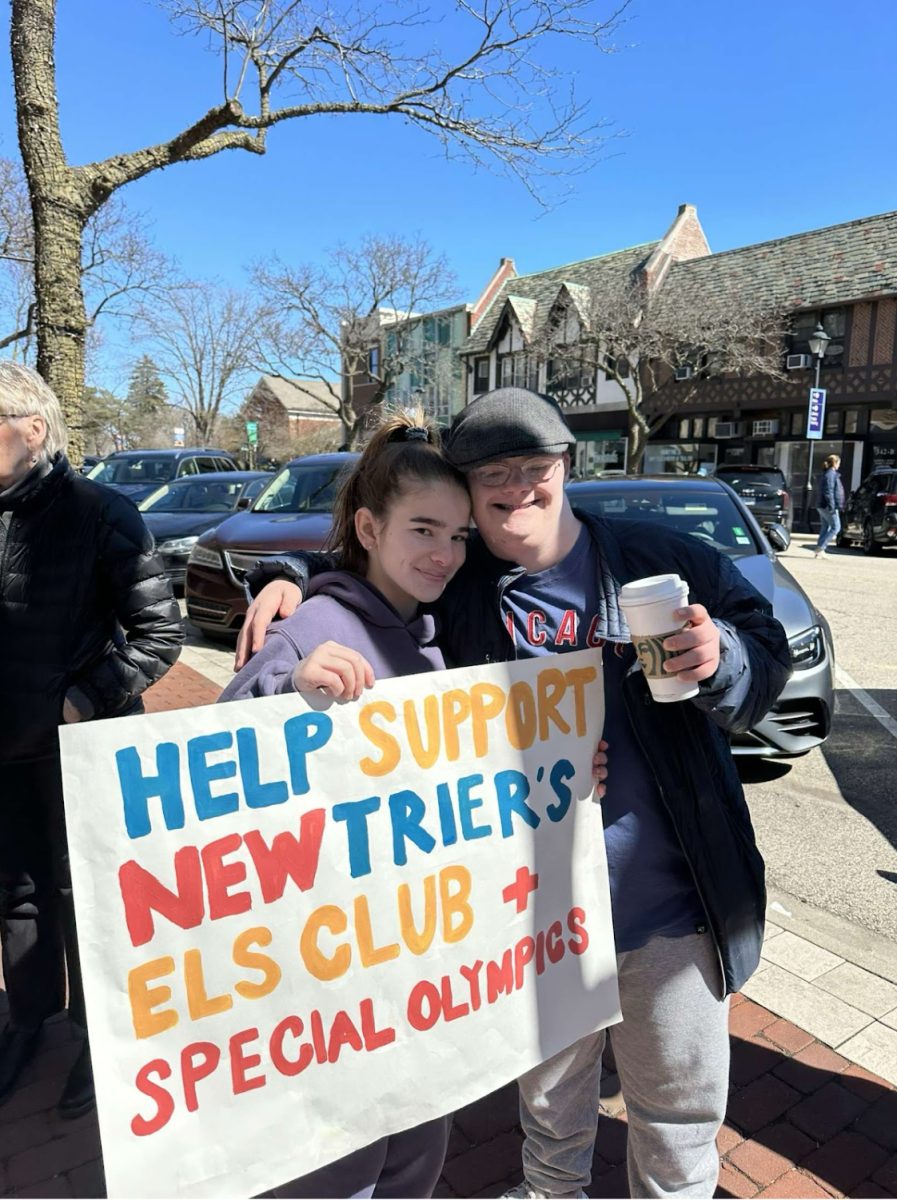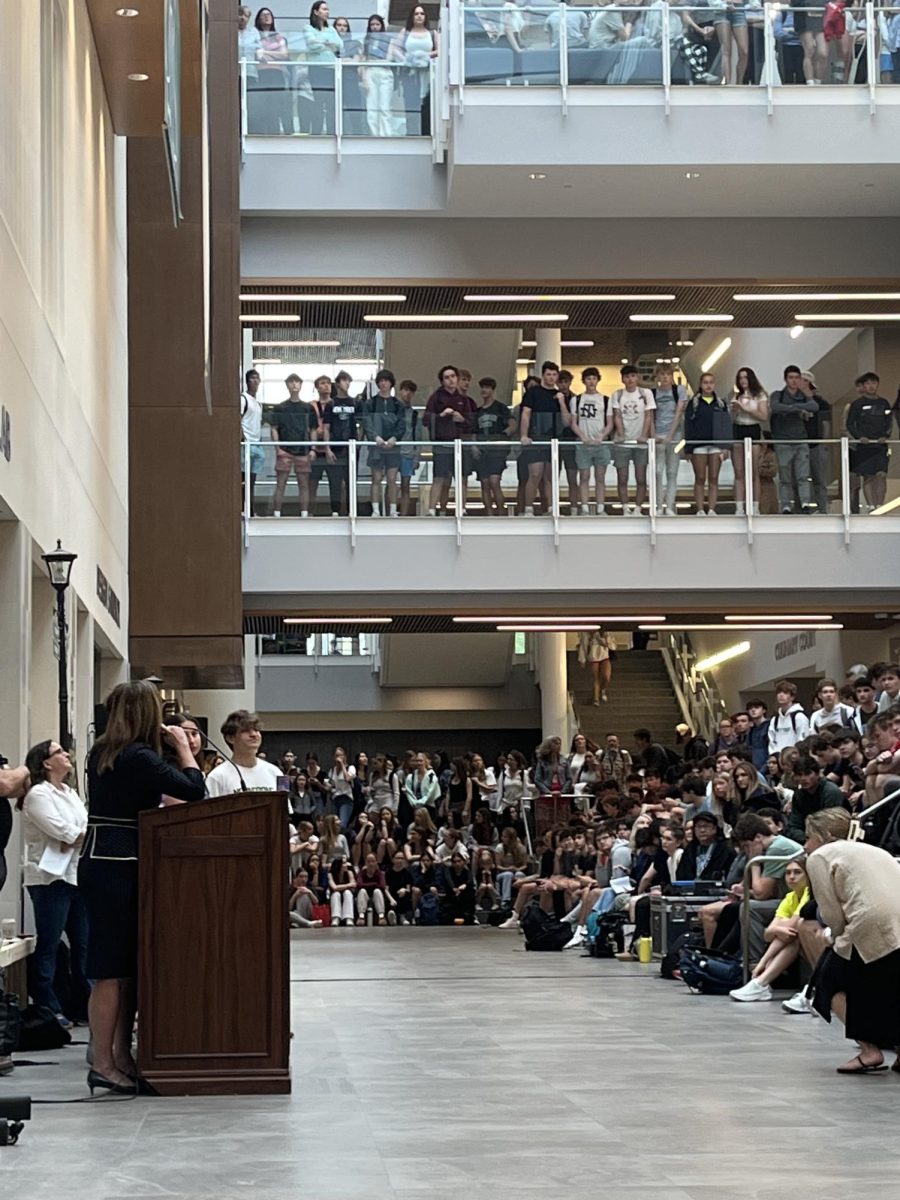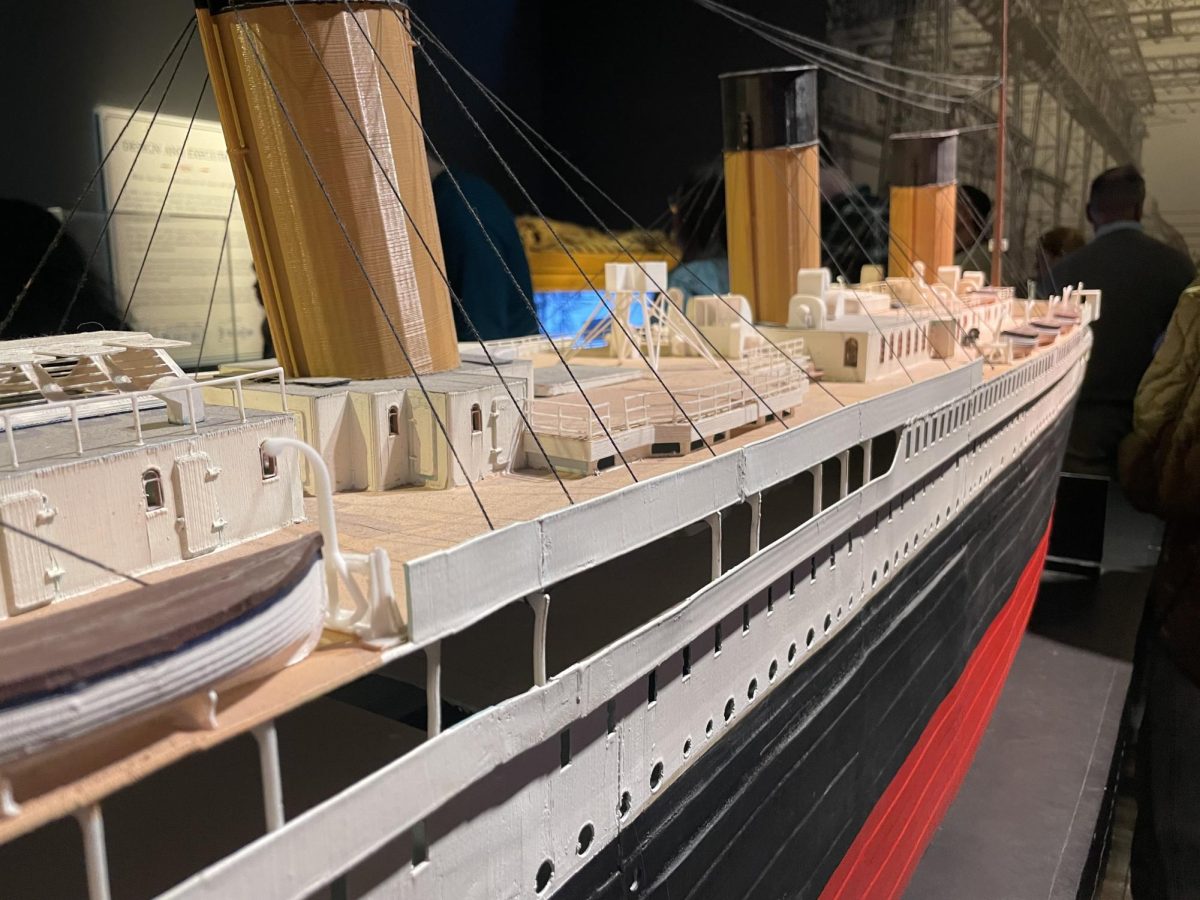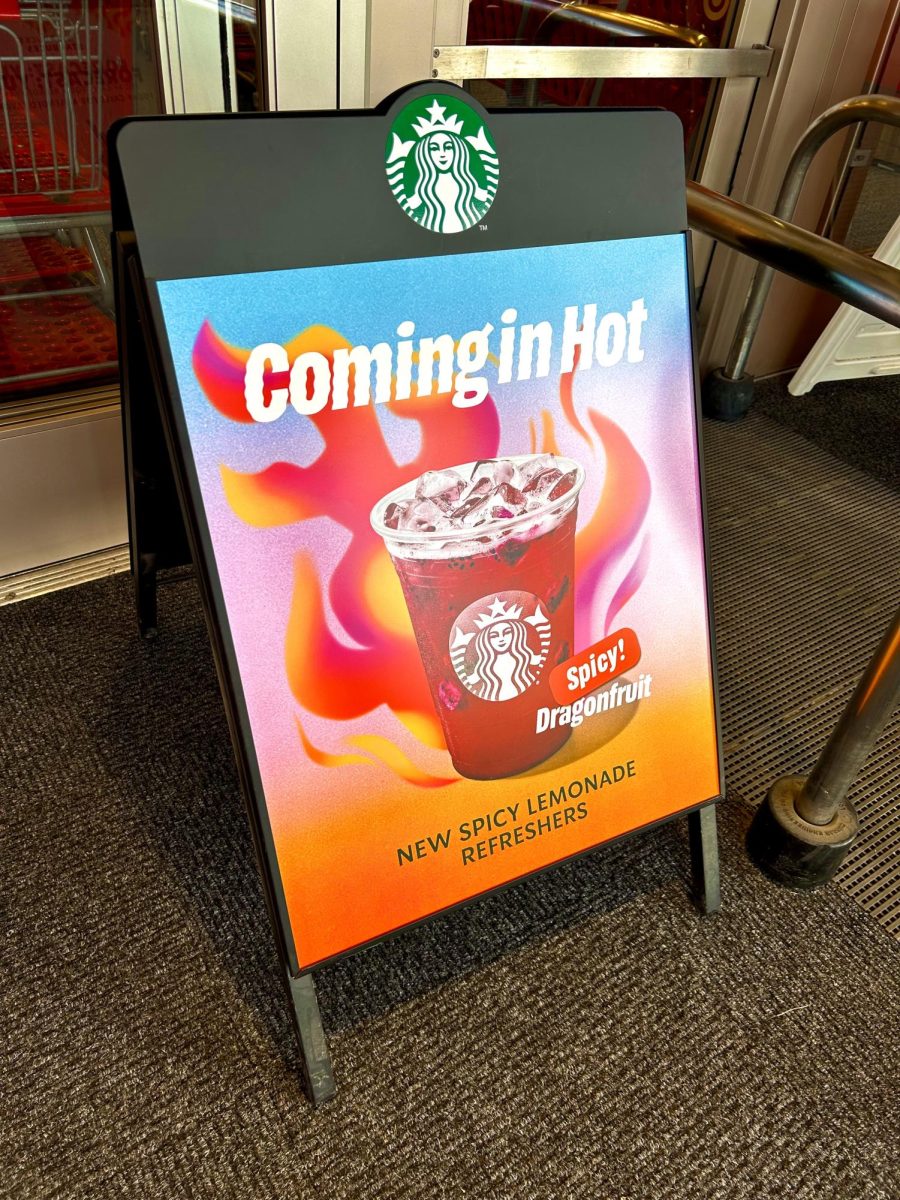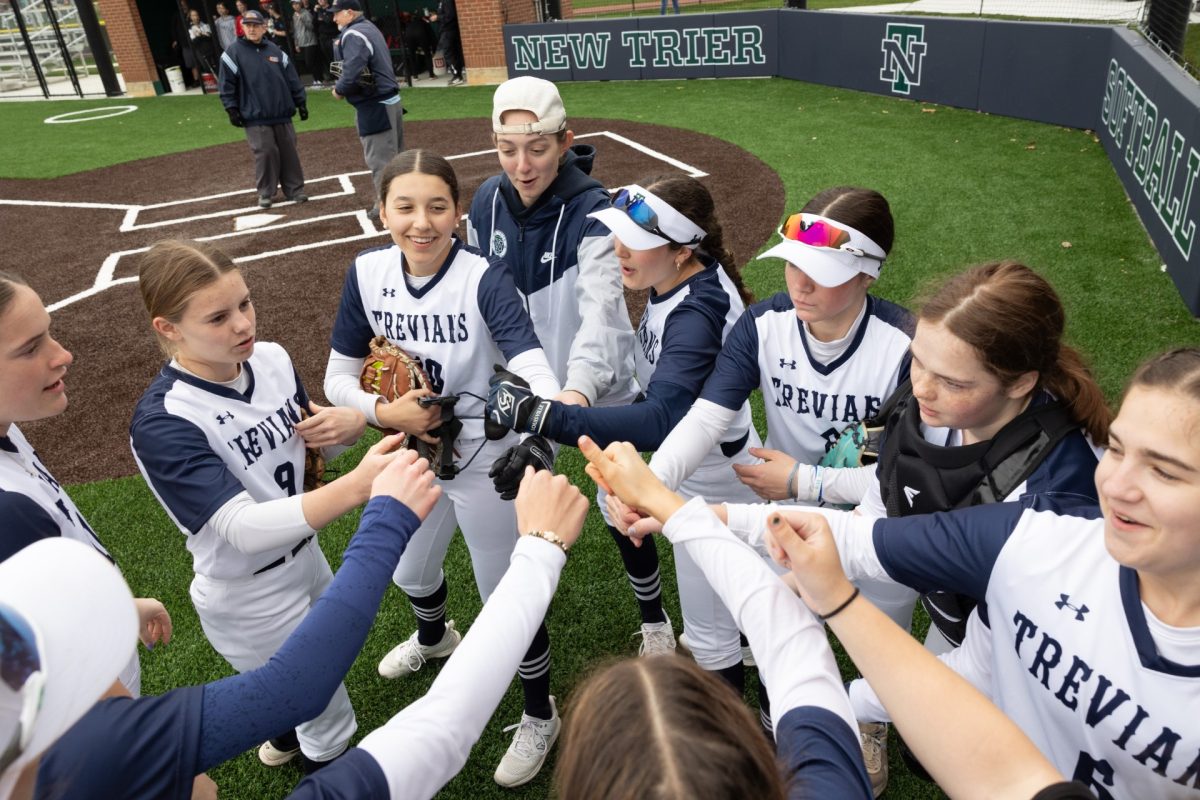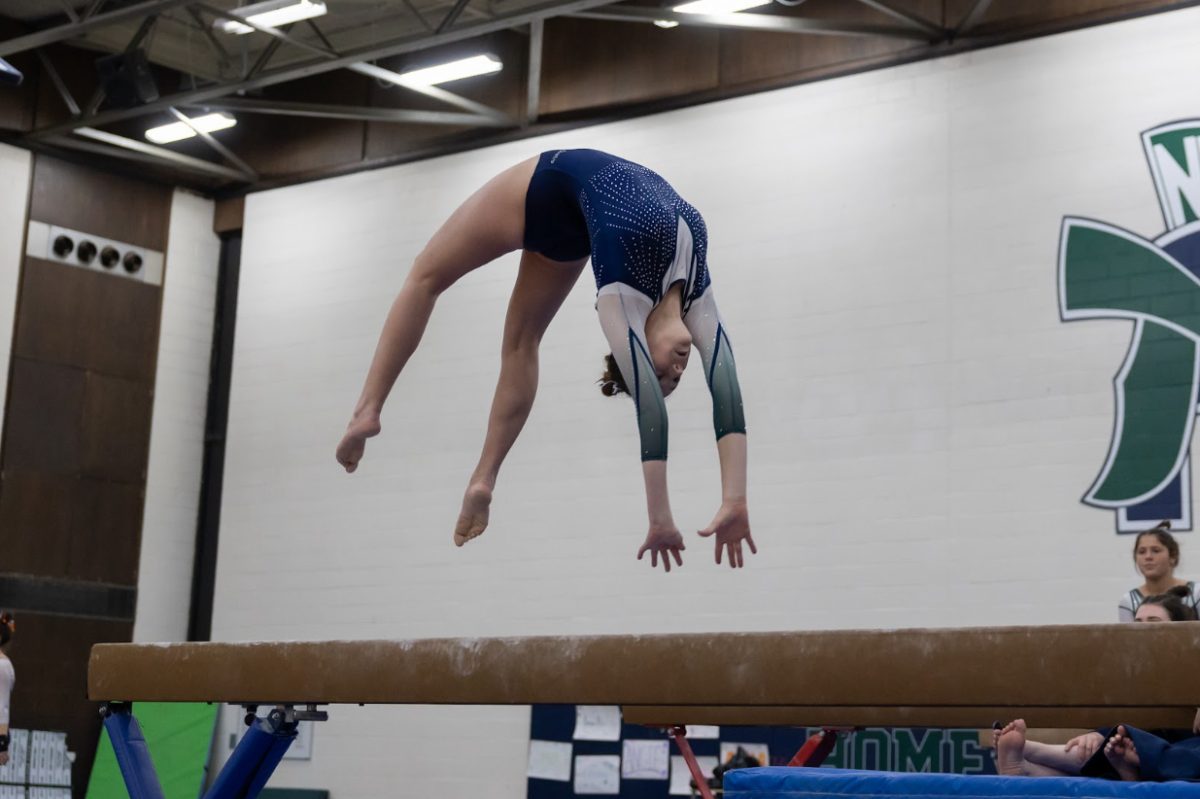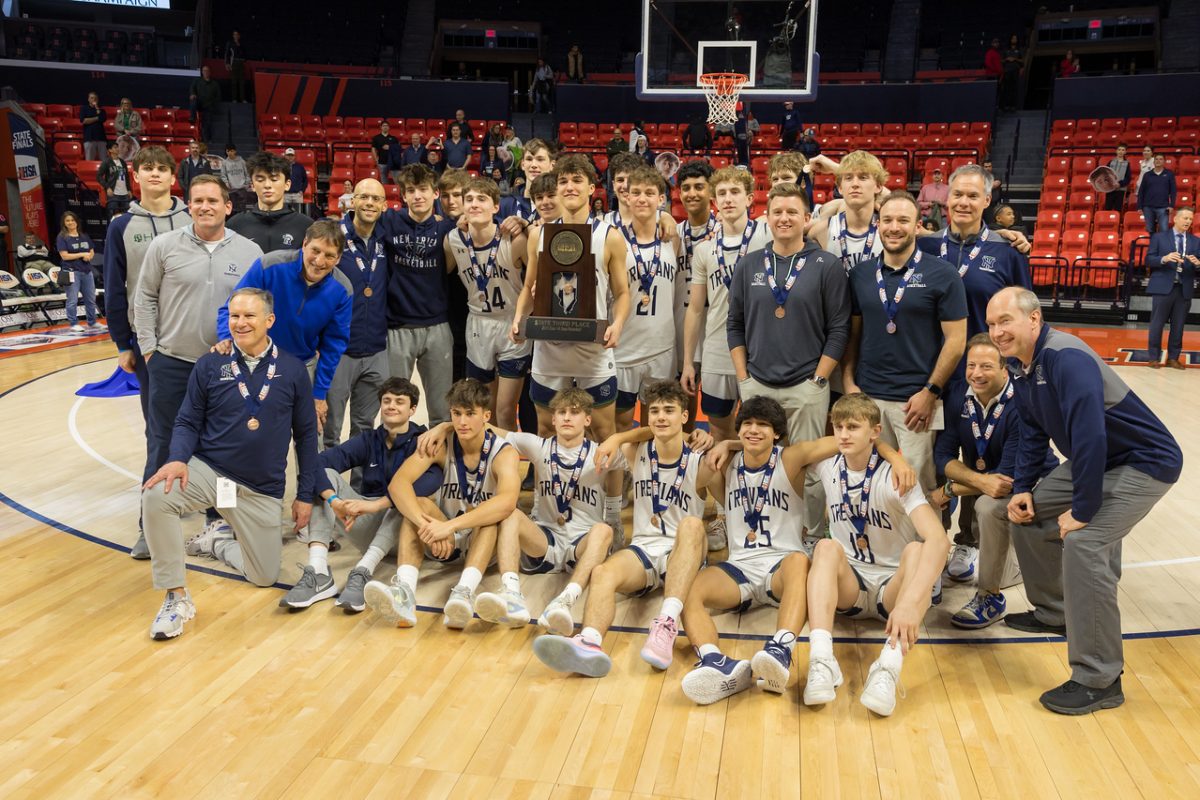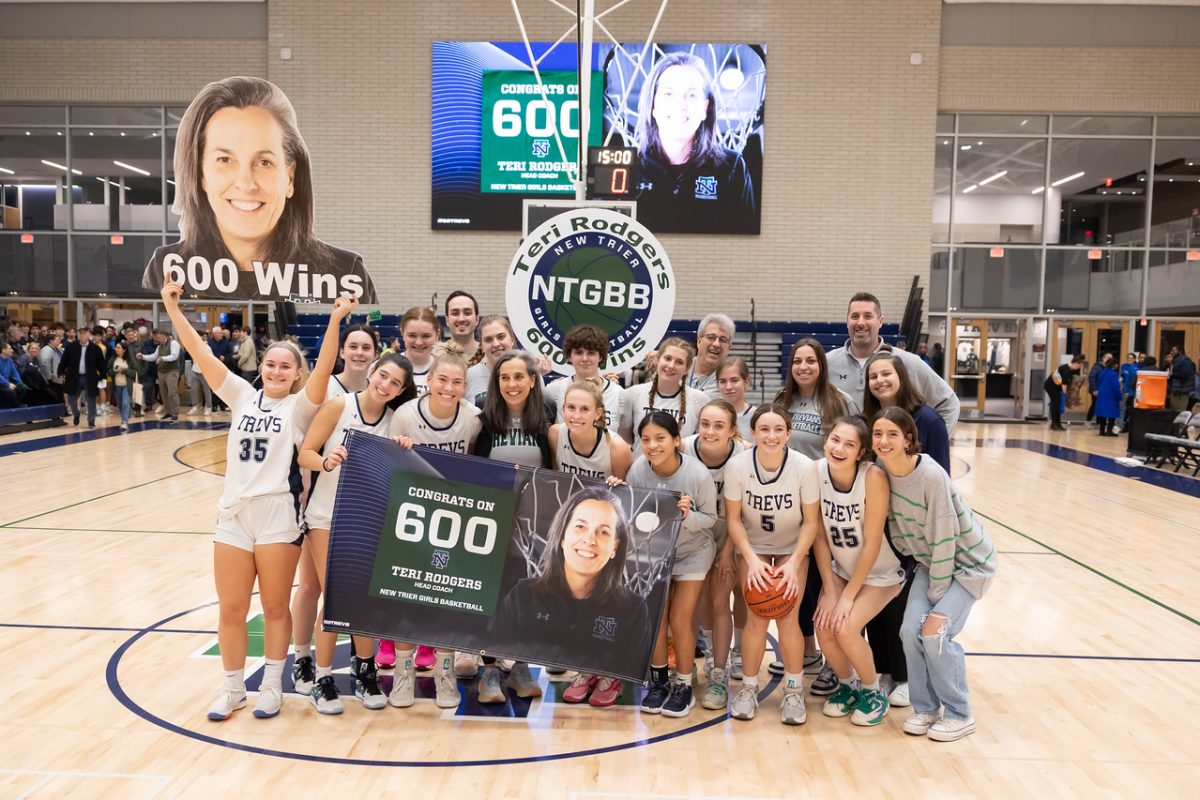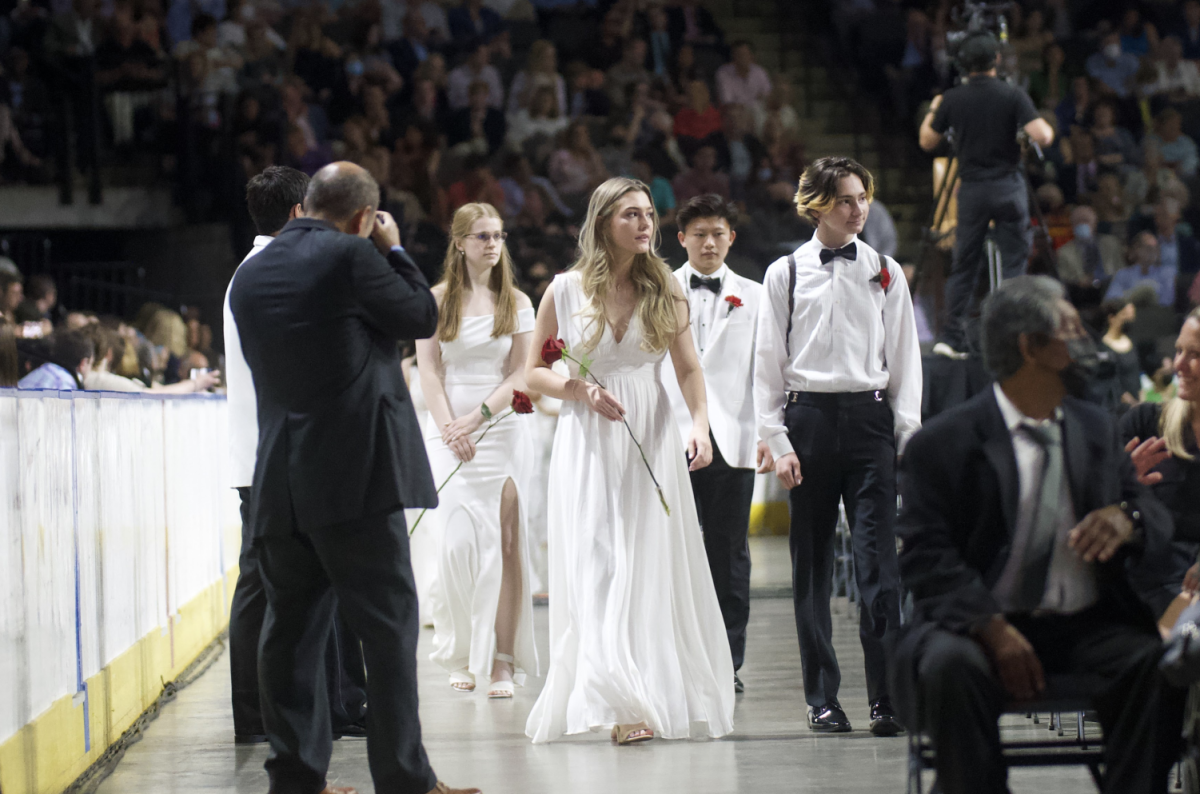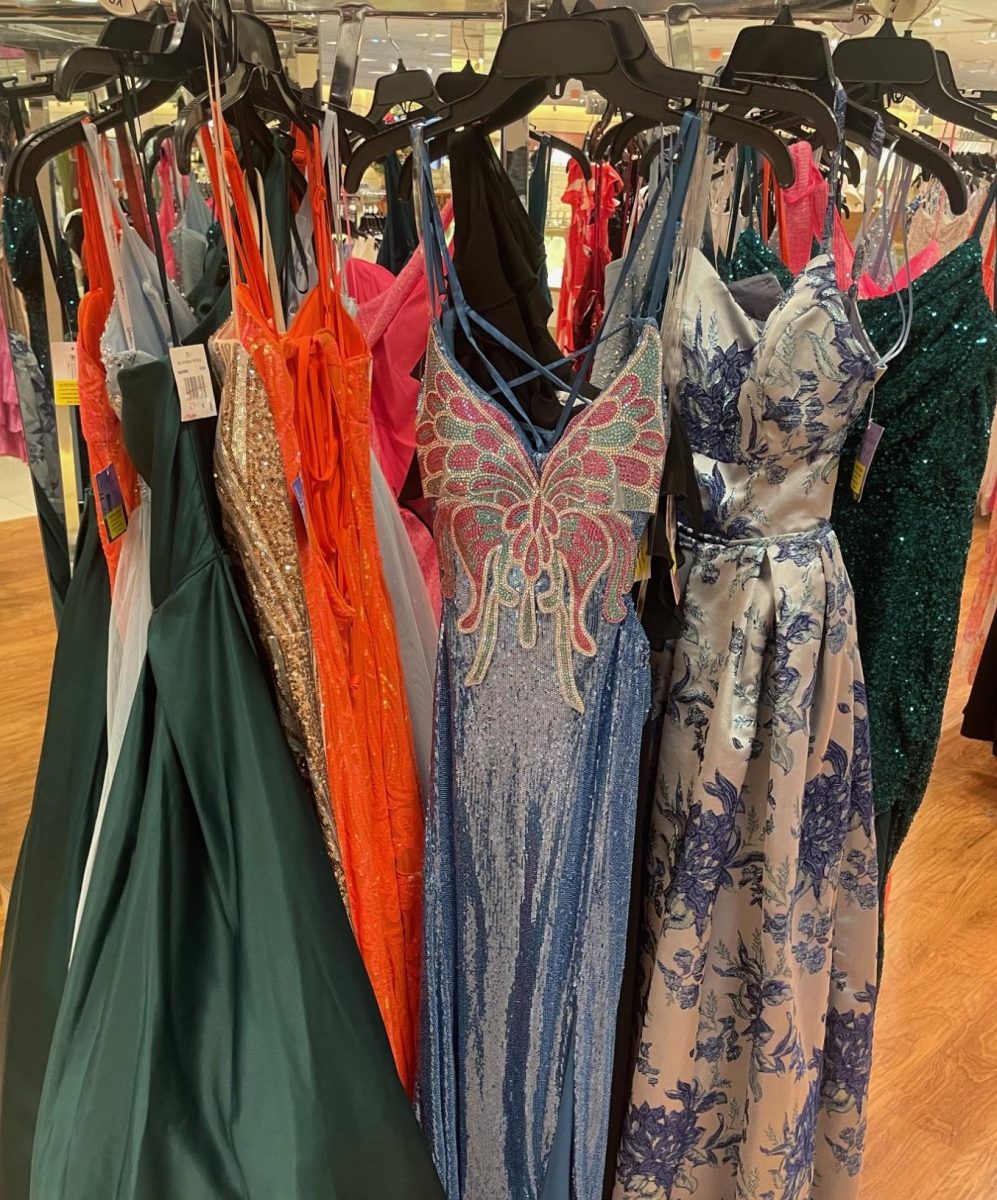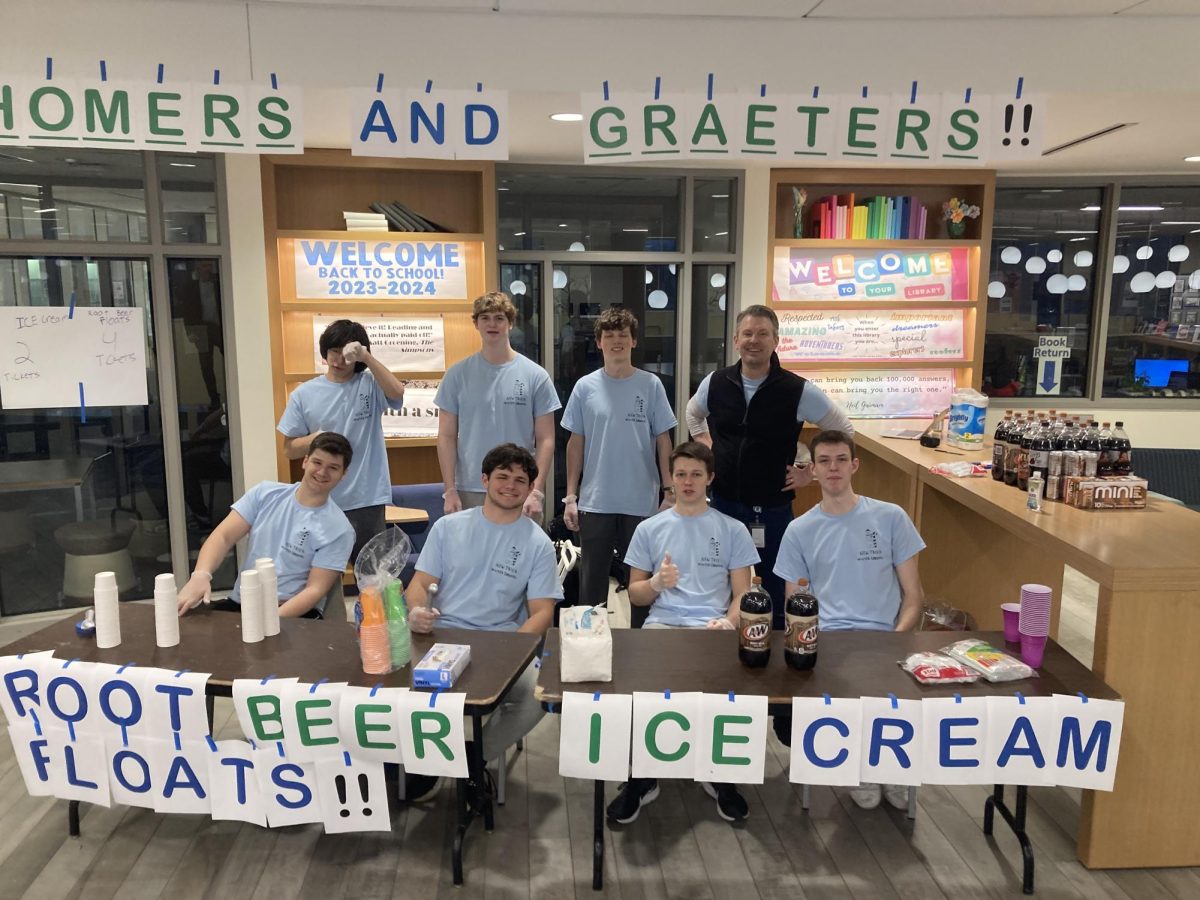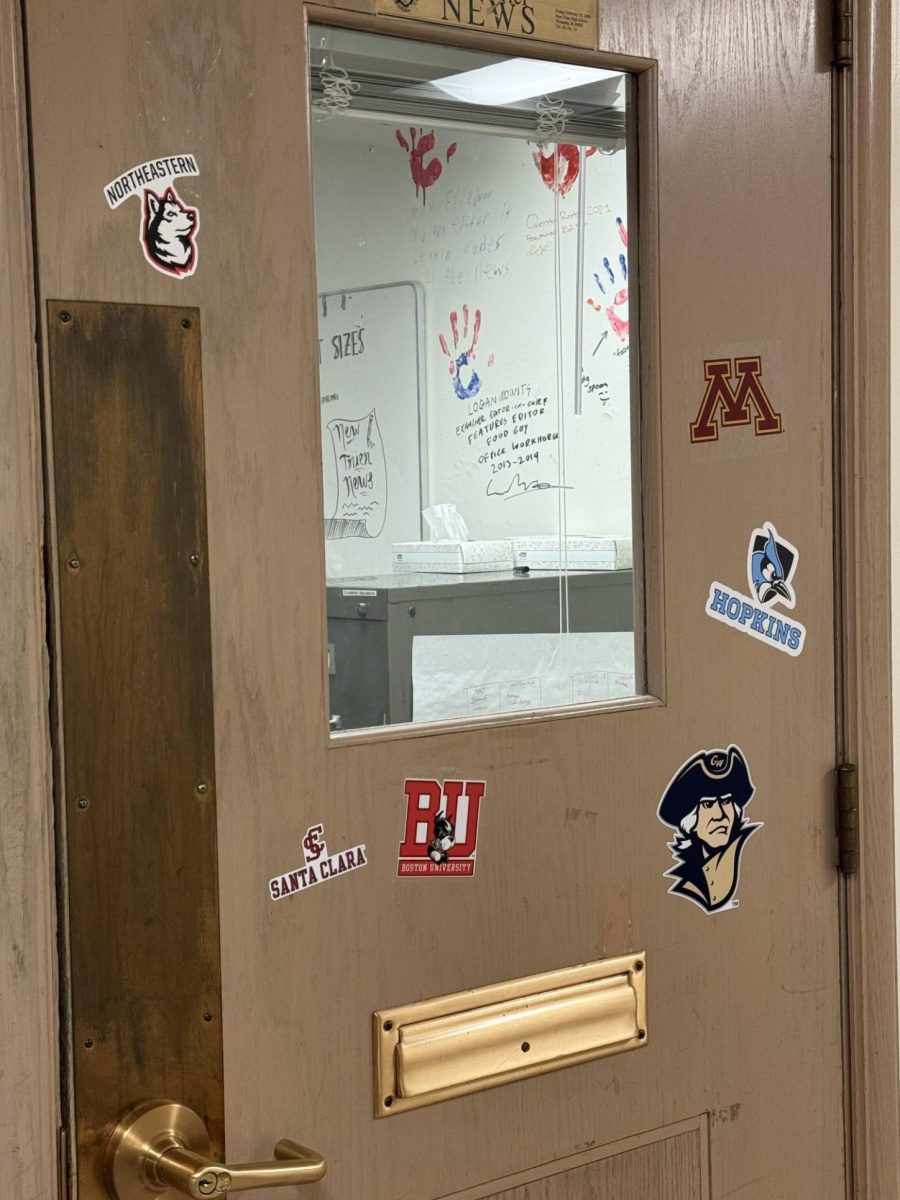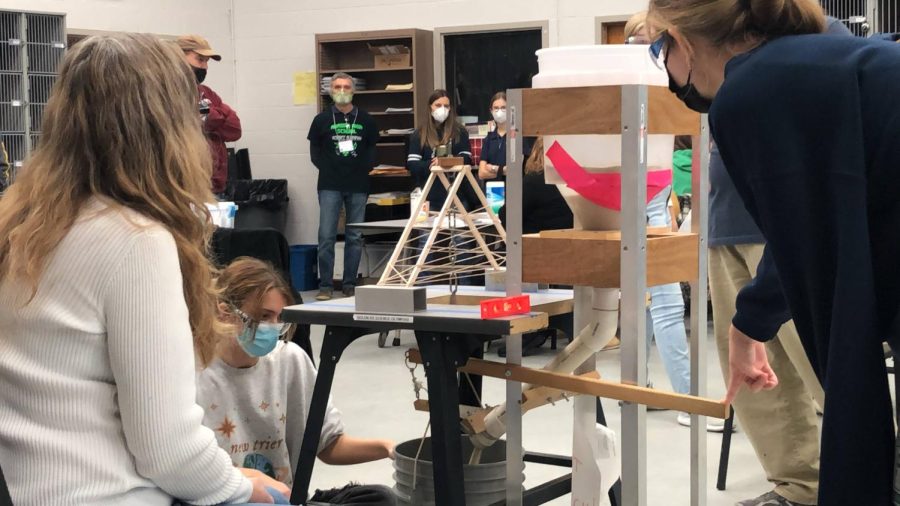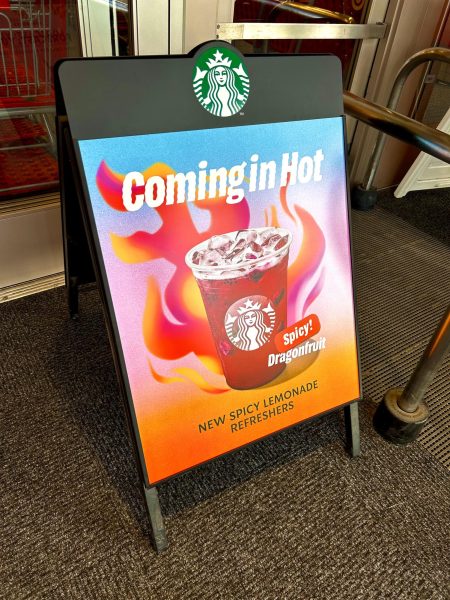Science Olympiad carries the torch of testing
As season picks up, Scioly members adjust to new way of competing
Seniors Mia Moline [on the floor] and Elizabeth Feoktistov [right] test their bridge for the build event in Solon, Ohio’s Invitationals on January 15
Clocks ticking. Pencils scraping. Minds racing. With countless hours of practice, determination, and grit, Science Olympiad team members learn to become the masters of competitive testing.
On Jan. 22, Science Olympiad had an online competition hosted by MIT. 13 students placed in the top 10 in at least one of their events. Up to this point, they have had a strong start to the season, consistently finding ways to improve.
I saw a lot of improvement in many events, which is really encouraging even if people just went from 25th to 10th place.
— Xu
Science Olympiad, a STEM-based club, competes in teams of 15 with tests in 23 events, ranging from biology to engineering. The team competes at Invitationals, competitions hosted by different high schools or colleges. Multiple events can run simultaneously, so members tend to compete in two to three events.
“These events could be a paper and pencil test, or they could be builds,” said Science Olympiad sponsor and Technology Education teacher Alexander Howe. “In builds, you actually have to build a device and bring it with you to the competition. The events also might be a hybrid event, where you actually do a paper and pencil test with an additional lab practical or a demonstration of your build during the competition.”
During Invitationals, the objective is to get the lowest possible score in order to place the highest.
“You want the lowest possible score. If I got first place, I would only add one point. Whereas if I got 32nd place, I would add 32 to my team score,” said junior Charlotte Calkins.
These Invitationals are meant to prepare Science Olympiad for important competitions like their upcoming Regionals in March.
“Invitationals are more of a good progress measure, or practice for the real competitions that matter like Regionals, State, and Nationals,” said junior Isaac Noel.
Because of Covid, however, most of the Invitationals have been online, including Regionals, State, and Nationals. The tests are remote, and members aren’t able to go to other high schools or colleges to compete.
“Invitationals now compete in a “satellite” format. For New Trier, that looks like the team arriving at the school at 8:00am and spreading out in the IGGS lounge to take tests, or recording their builds in the gyms,” said senior Maryanne Xu.
On Jan. 15, Science Olympiad attended a rare in-person Invitational at Solon High School in Solon, Ohio.
“Our last Invitational had been at Loyola in 2020, so it was very fun to finally go somewhere to do an Invitational as opposed to just going into the school. It was great for morale, and we got to meet a lot of people from across the country,” said junior Annabel Ma.
Varsity won 4th place, and Junior Varsity won 15th place.
“We had a pretty rough go at our last one in Boyceville, Wisconsin, so we had some tough conversations with the team. We try to keep things positive, but we said that this was not the trajectory that would help us achieve our goals. And in Ohio, a lot of people stepped up,” said Howe.
Many competitors showed tremendous growth at the Solon Invitational compared to the prior Invitationals this season.
“I saw a lot of improvement in many events, which is really encouraging even if people just went from 25th to 10th place. It’s still a really big improvement that helps the team score,” said Xu.
While there may have been growth, there is also always room for improvement in Science Olympiad.
“I would say we did not do as well as we hoped. It was our first in person Invitational of the season, so a lot of things came up that would not mimic an online one. Like for online Invitationals, normally they wouldn’t have lab parts, but in-person Invitationals, they do,” said Ma.
In-person Invitationals are a completely different environment which members had to adjust to in Solon.
“Invitationals in general are always high stakes, with high pressure. Especially Solon, not because it’s in person, but because it’s a historically competitive invitational,” said Noel.
Build events experienced a huge difference in-person as members only had eight minutes to test devices on the spot.
“You couldn’t test earlier in the day, you just had a very set time slot and you couldn’t be late. Like previously, when we’re doing it at New Trier, you kind of just go whenever you want to, just as long as you get it by a deadline. But in Solon, if you weren’t there, you couldn’t go at all,” said sophomore Tiana Wu.
The rigor that comes with Science Olympiad can be brutal. But for the members, the experience is worth the pressure.
“It’s weird to think something so competitive could be fun, but I have made some of my best friends from Science Olympiad,” said Wu. “The environment is the most supportive group of people I have ever had.”



